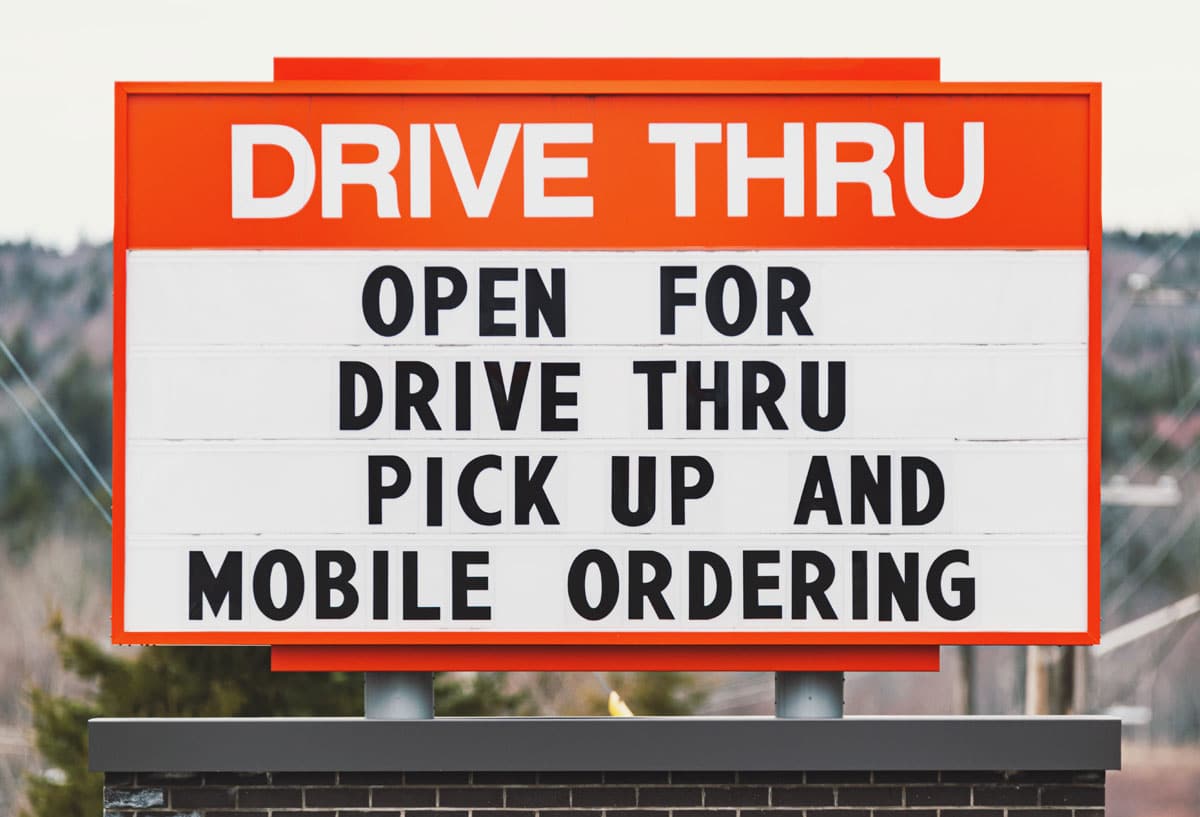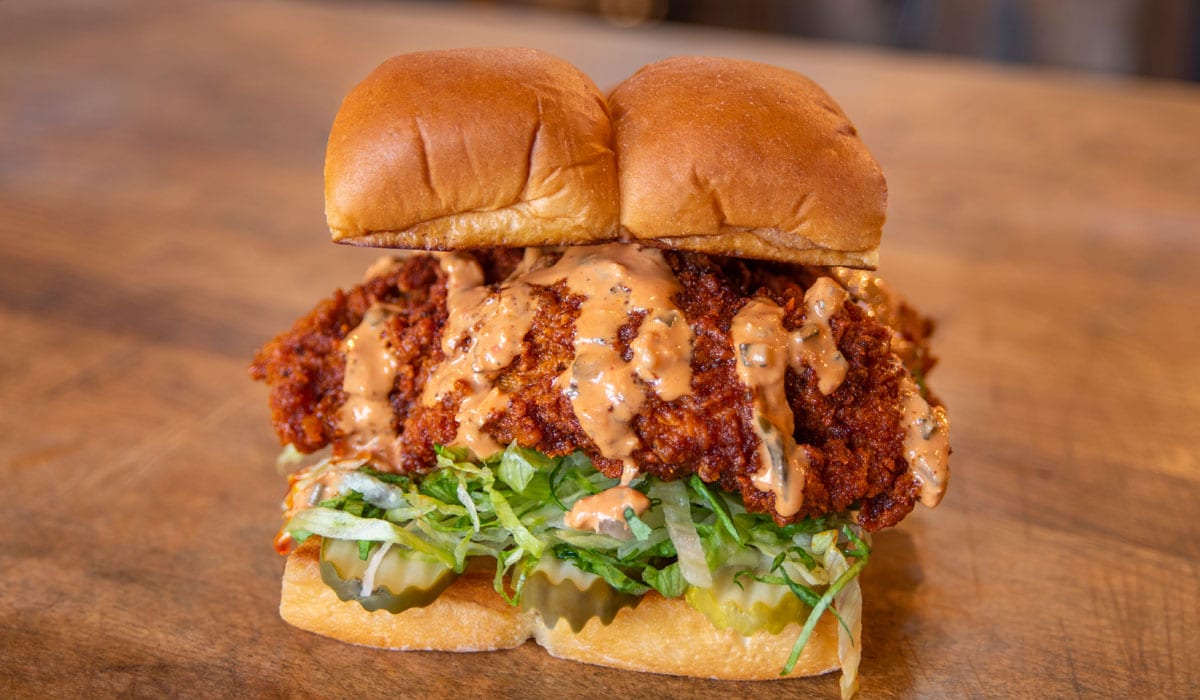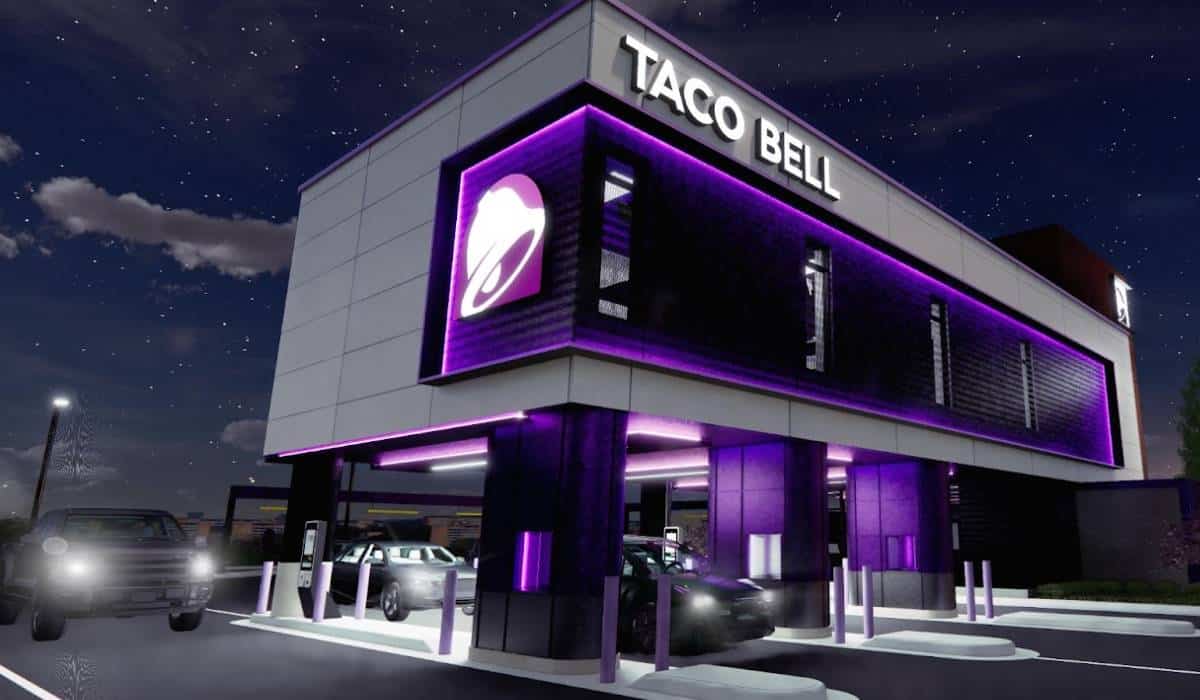Before the pandemic, restaurants weren’t exactly first to the innovation stage. Hospitality can be fickle. Consumers change. So do markets and demographics. And, at least in multi-unit and franchise systems, the ROI on any bill placed in front of operators has to print in big letters.
However, COVID forced the cycle to step quicker. No other external force was capable of stripping access the way dine-in bans did. In turn, restaurants, and quick-serves in particular, sped to open channels and get food to guests. Drive-thru, curbside, mobile, and the rethinking of kitchen capacity via virtual brands, went from boardroom plans to overnight reactions. Eventually, as restaurants turned the corner, consumers reclaimed their center of gravity, Judy Chan, CMO of customer arrival platform Bluedot says.
And so, where did this take restaurants? Straight into an era of convenience, which is something the consumer was asking of restaurants pre-virus. “Across six studies, consumer demand for convenience has stood out as a key theme,” Chan says, referencing the company’s consumer polls throughout the crisis. “In the coming year and beyond, we’ll see restaurant brands aggressively invest in digital strategies both in-store and off-premises to improve speed and ease of use and that includes the arrival experience. Delivering that level of convenience will win brand loyalty.”
To put it plainly, consumers still favor many of the pandemic’s dining pivots. They want to balance prior habits, like dine-in, with occasions picked up over the past two-plus years. And this drives the convenience bar higher.
Driving a mobile future
At the drive-thru, gains feel permanent, per Bluedot data. In February 2022, and September, May, and February of the previous year, the percentage of consumers who visited a drive-thru in the last month was at, or just under, 90 percent. A month after COVID hit? The figure was 79 percent. Visitation has remained consistently 10 points higher than those early, strange pandemic days.
It isn’t news to quick-serves. Drive-thru lines haven’t blurred segment-wide; they essentially no longer exist. By mid-February, Shake Shack had three (Maple Grove, Minnesota; Lee’s Summit, Missouri; and Livonia, Michigan) with more on deck for Vineland Pointe in Orlando, and Castle Rock, Colorado. It expects 10 up and running by 2023, while 25 percent of its entire corporate fleet of openings this year will include either a “Shack Track” walk-up or drive-up window. Chipotle’s 3,000th location—opened February in Phoenix—featured the brand’s digital order drive-thru pickup lane, or “Chipotlane.” In 2021, the fast casual debuted 215 units and 80 percent included one. The same mix will comprise the 235–250 restaurants expected this calendar year.
Even Applebee’s, which launched a drive-thru pickup window in Texarkana, Arkansas, brought its third to market recently—a reaction to the fact sales outside the four walls accounted for 26.7 percent of the business in Q4. Average off-premises weekly sales were $13,800, more than double pre-pandemic. Texas Roadhouse is building them, too. As is barbecue chain Smokey Bones, which designed a full-tilt, digital-enabled drive-thru at a Bowling Green, Kentucky, location. The setup includes the chain’s virtual brands and a dedicated space inside the restaurant, complete with point of sale and audio headsets.
Without question, drive-thru competition has taken off.
In March, Hanley Investment Group Real Estate Advisors arranged the sale of a new construction, single-tenant Habit Burger. Complete with a drive-thru, the site at California’s Monterey Crossing shopping center sold for $4.57 million, which the company said was a record-low cap rate nationwide for a single-tenant Habit Burger.
“We created a competitive bidding process that helped secure a 1031 exchange buyer at 100 percent of the asking price,” says Bill Asher, Hanley Investment Group EVP. “… We expect to see more [quick-service restaurants] with drive-thrus as companies roll out their prototypes across the U.S.”

The app generation
Bluedot asked consumers what they felt was the most improved aspect of the fast-food experience since COVID. Fifty-eight percent picked “mobile app ordering,” followed by curbside pickup (44 percent), web ordering (29 percent), drive-thru (25 percent), and offers (21 percent).
The top three least improved areas: Taste, ideal food temperature, and order accuracy.
And on the topic of how habits could change going forward, or if more setbacks arise, 34 percent of guests said they’d place additional mobile app orders, trailed by visit the drive-thru more (34 percent), tap web orders (21 percent), and use curbside.
Of those who still fear for their safety, 52 percent turned to mobile or online ordering.
Again, though, the conversation of late has largely shifted toward convenience as the lasting impact. “Removing friction” is a well-worn page in the playbook. But can operators lean on old consumer trade-offs? For instance, is the drive-thru convenient enough for guests to accept mistakes or antiquated technology? Perhaps, but the leash is tightening.
Consumers in the survey listed their innovation wish list: Designated drive-thru lane for mobile pickup (56 percent); food kept warm at pickup station (42 percent); mobile only ordering for fast and easy pickup (27 percent); restaurant automatically checks customer in upon arrival at curbside (27 percent); and ability to text order to restaurant (27 percent).
Guests also expect more from menuboards. The top features they’d like to see: Shows current order on the screen (55 percent); highlights deals (51 percent); view loyalty points and/or personalized deals (36 percent); highlights limited-time items (34 percent); showcases most-popular items (30 percent); shares suggested menu items based on previous orders (25 percent); and name and usual or most recent order displayed (18 percent).
In addition, 60 percent of respondents increased usage of self-service ordering options in the previous six months, including mobile ordering (48 percent), web ordering (22 percent), and kiosks inside the store (14 percent).
What’s driving frequency is the same storyline that flashed amid COVID—consumers went where friction wasn’t. Six in 10 consumers, even in 2022, said they downloaded at least one new restaurant app in the last three months. It’s held throughout. February (59 percent); September (59 percent); February 2021 (82 percent); August 2020 (63 percent); and April 2020 (51 percent).
According to App Annie, users spent 49 percent more sessions, year-over-year, in food and drink apps last year, reaching the 62 billion mark. Across all of 2021, McDonald’s collected 24 million app downloads in the U.S.
Restaurants raced to this arena because COVID leveled the digital playing field. Guests sought brands as much as platforms, which was a course change from pre-pandemic trends. Previously, the debate over whether or not third-party delivery transactions were, indeed, incremental, was often a question of “was this a customer I would have got before?” Now, guests didn’t take to delivery solely to look for, say, burgers or because they were aggregator loyalists; they wanted food from a specific eatery that closed its front doors. So restaurants worked quickly to enable off-premises.
In a TouchBistro study from early 2022, which focused on full-service restaurants, 34 percent of operators said they were now offering online ordering directly from their website. More than half (57 percent) said they had a loyalty or rewards program of some kind, and two in five implemented loyalty in the last year or two.
Tillster, from a report released roughly the same time, indicated consumers would rather interact directly with their favorite brands. Forty-four percent of respondents said they’d prefer to order delivery directly through the restaurant’s website or mobile app. Less than 10 percent put third-party delivery experiences at the top of their list.
Shake Shack CFO Katie Fogertey told investors at the ICR Conference in January funneling customers into native channels would be a major area of emphasis in 2022. The chain launched a new website in 2021. “We’re building personalized marketing opportunities to help drive frequency and guest connection,” she said. “We just know and we continue to see it, when we bring a guest into our digital ecosystem, we see higher frequency, we see higher checks. There’s a better guest experience associated with that. We just think they understand who we are and the value that we offer more.
More than 50 percent of Panera Bread’s orders today are processed in a fashion that captures data (app, online, kiosk, drive-thru, loyalty at the register).

The new face of value
This far into the COVID story, it’s clear why apps gained relevancy, and why brands invested behind that wave. Going forward, the ability to market lower price points through direct channels (versus third-party delivery) will play a key role in getting customers to fork up invaluable data.
For those aged 45–64 in Tillster’s study, nearly a third (29.6 percent) said they’d be willing to spend $5 in delivery fees. Yet among those aged 65-plus, 35.7 percent said they wouldn’t pay $1 in delivery fees.
According to Paytronix, 96 percent of restaurant managers mark down prices for loyalty program members, and the average loyalty discount clocks in at roughly 3.8 percent.
Restaurants charge an average of 24 percent more for menu items listed on aggregators than for the same items on their own channels. Twenty-seven percent of quick-service managers added they sell the same foods for higher prices on aggregators (14 percent or sit-down brands).
For a bevy of external reasons, consumers are more cognizant of fees than in previous years. Per Tillster, the maximum delivery fee the average person was willing to pay in 2021 was $3.90. Pre-COVID, 85 percent of customers said they were willing to spend up to $5. Throughout the pandemic, brands explored free delivery and other lures to drive business when dine-in sagged. As a response, only 44 percent of people in Tillster’s data, a mere two years later, were still willing to pay $5 or more.
Speed at the point
More than a third (37 percent) of customers in Bluedot’s study added they were placing more mobile orders on restaurant apps than three months ago. And there’s more going on than just price. The No. 1 reason here—nearly one in two said they’d download an app to bypass a long line. Fast and easy to order (52 percent); earn and track loyalty points (49 percent); exclusive deals or coupons (48 percent); and ease of payment (42 percent) rounded it out.
And to the earlier preference shift, the majority (57 percent) said they use all, or mostly all, restaurant apps over third-party apps.
In terms of whitespace, just like drive-thru, a flood of traffic surfaced problem areas. Nearly half of consumers said they’d delete an app if their order was cold upon arrival.
They’d also do so thanks to limited-menu options (47 percent); still have to wait (42 percent); doesn’t save time (31 percent); and can’t customize order (36 percent).
Guest satisfaction, in general, boarded a COVID roller coaster. One in two consumers told Bluedot they were most frustrated with orders not ready upon arrival.
Also: order was ready but still needed to wait (50 percent); food was cold (47 percent); order was inaccurate (45 percent); and no designated mobile order pickup line (29 percent).
The final point is a lead reason why brands are plotting multiple-lane drive-thru designs, order-ahead pickup windows, investing in shelves inside, or working with dual make-lines to split digital and in-store business. This topic saw the largest increase, of 32 percent, Bluedot recorded since polling guests. As it turns out, convenience channels can cause friction in their own ecosystem.
Consumers don’t appear to be getting more patient. Ninety percent of diners said four to seven cars in a drive-thru was still too long to wait. That figure was 88 percent in April 2022.
Seventy-six percent said they’d either leave or consider doing so if they pulled up and saw that many vehicles.

Delivery adjustments
Respondents across Tillster’s study agreed delivery time was a critical factor after all these months. Forty percent said they’d wait 40 minutes. Anything above that and sentiment rolled off a cliff. Only 21 percent claimed they’d wait 41 minutes or more.
The most important counter, according to guests? Restaurants communicating accurate delivery estimates. Using Shake Shack as an example, it layered in dynamic prep time into a recent app update.
Similar to fees, time-based challenges are pushing guests into multiple digital channels—not necessarily away from them and into the restaurant booth. Many consumers who have become convenience loyal are looking for alternatives. Across urban/rural divides and family sizes, more than 70 percent of Tillster respondents said they’d rather pick food up than wait for a long delivery.
The average quick-serve customer today is ordering delivery twice each month, Tillster found. At 2.5 orders per month planned in the next three months, we’re looking at a 32 percent bump from 2019, with a definite rise among middle and older-aged groups.
In the next year, 81 percent of respondents will order online for delivery the same amount or more often.
Pulling out Gen Z, perhaps the fastest-rising cohort of restaurant guests, nearly 86 percent said they would “probably” or “definitely” order from their favorite fast food or fast casual more often if it offered delivery. They were also more likely than any other age group to order multiple dayparts, including lunch and late-night. Twenty percent said they’d spend $10 or more in delivery fees.
Where the data takes us
In Bluedot’s study, three out of four consumers (of every demographic) were willing to share their mobile location for better service. Sixty-nine percent said they’d do so if it meant their order was ready upon arrival. Forty-seven percent were on board if it resulted in a hot meal. Coupons (32 percent), and to not miss out on the brand’s latest offerings (21 percent), factored in as well.
One place you can see this in action: More than 50 percent of Panera Bread’s orders today are processed in a fashion that captures data (app, online, kiosk, drive-thru, loyalty at the register). And all indicators suggest customers will keep doing so if the restaurant makes it worth it.
What has digital done to tipping? It’s an important question as restaurants battle labor dynamics. The ability to promise higher hourly wages thanks to tipping is one lever many brands are hoping to pull. Employees at fast casual Honeygrow, on average, make about $13–$15, depending on position. Managers north of that. However, the chain’s 100 percent digital format (kiosks in-store) lends itself to tipping more often than not, CEO Justin Rosenberg says.
It measures in the ballpark of $1.50 an hour, meaning those same front-line workers can actually gather $16.50, or more.
“There’s a lot of places where you can go to a coffee shop and oftentimes I’ve noticed folks, they order, they use their card, and then the cashier will spin the iPad around and then there’s the tipping option,” Rosenberg says. “And I think a lot of times people feel uncomfortable with that. Whereas with the kiosks the way we have it, there’s no pressure.”
It’s helped with training, too. “How can Honeygrow make the experience better for the guest” isn’t just a whiteboard tactic that flows from the top down, Rosenberg says. Exceeding customer expectations is something hourly employees see right there on their paychecks.
Close to half (46 percent) of Bluedot respondents said they do not tip for mobile and web orders. Of those who don’t, 27 percent admitted to thinking about it, but ultimately deciding not to.
Thirty-seven percent also feel pressured at the counter to tip. Requesting for a tip on a tablet made one in three consumers uncomfortable, and of those who don’t feel pressured, 70 percent were happy to tip.
Overall, while inconsistent, 74 percent of consumers said they tip at restaurants. Thirty-three percent tip equally regardless of whether they’re ordering via app, web, or in-person, while 30 percent tip more in person, and 11 percent said they do so online.
A majority (58 percent) said they tip appropriately when placing orders with third-party apps; 13 percent extra; 9 percent less; and 20 percent not at all.
The higher checks restaurants, mainly in quick service, continue to report from mobile orders and digital channels, appear a reflection of larger party sizes and patience in menu selection as much as anything else.
But in all, there’s little debate restaurant customers learned from the pandemic, just as restaurants did.
They turned to digital out of necessity, yet have become full-circle guests with higher demands.
According to Paytronix’s 2022 Restaurant Friction Index, released in March, 41 percent of an average restaurant’s sales now flow through digital channels, including mobile apps, aggregators, and websites. It’s far more than the 32 percent generated via brick-and-mortar location and 26 percent from phone calls.
Restaurants were receiving orders through an average of 2.7 different purchasing channels at any given time (mobile app, aggregator, desktop website, on-site visits, or over the phone). “Today’s most successful restaurants look at the customer experience holistically, not as separate channels,” says Andrew Robbins, CEO of Paytronix Systems, Inc.
Unsurprisingly, 41 percent of managers noted in the report they consider it “very important” today to provide customers with a consistent, integrated cross-channel ordering experience.
On top of that, providing the right ordering (39 percent) and payment options (38 percent) would be “very” important to their innovation strategies going forward. Loyalty features and pickup options were equally common considerations, at 38 percent, respectively.
“In this environment loyalty, payments, and digital ordering all work in concert so that whether a guest orders from their couch or from the table in a restaurant, the experience is one that keeps them coming back,” Robbins adds.








